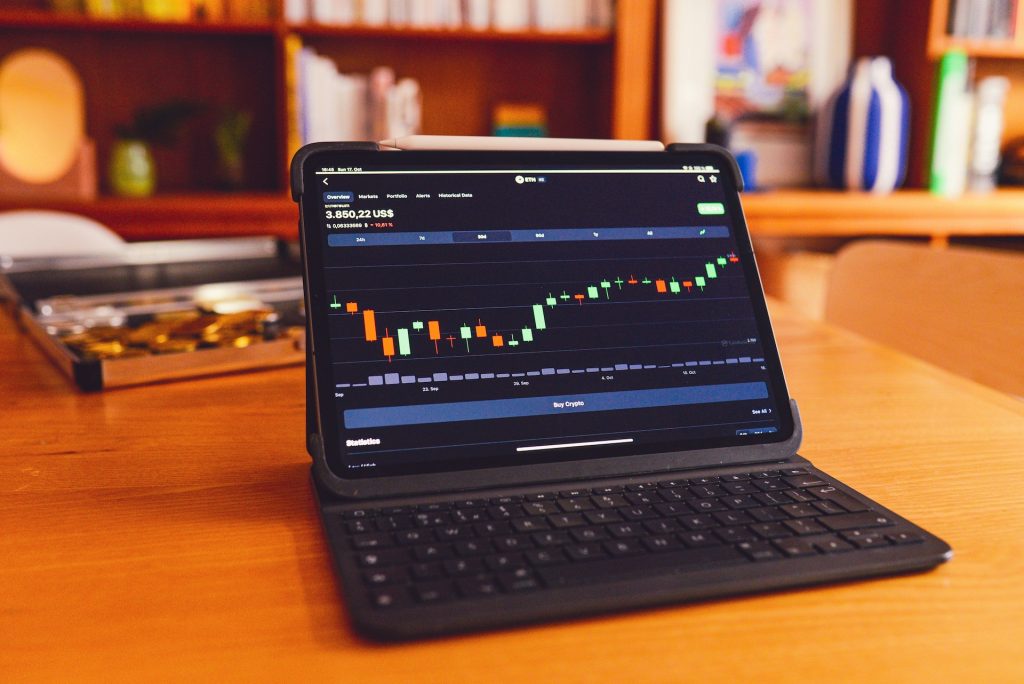The candlestick chart is one of the most popular and visually intuitive tools for technical analysis in trading. Unlike traditional bar charts, candlestick charts offer a more comprehensive visual of price movement, helping traders quickly interpret market sentiment and trends.
This article explores the basics of candlestick charts, their benefits, and how they can be used in market analysis.
What is a Candlestick Chart?
A candlestick chart is a type of financial chart that displays the price movement of an asset over a specific time. While similar to a bar chart in terms of data points, the candlestick chart represents information in a graphic format, making it visually appealing and easy to understand.
How to Read a Candlestick Chart
Each candlestick on the chart displays four crucial data points:
- Open – The asset’s price at the beginning of the trading period.
- Close – The price at the end of the trading period.
- High – The highest price reached during the period.
- Low – The lowest price reached during the period.
These components are represented through a vertical line, with a block, also known as the “body,” in the middle.
Components of a Candlestick
Candlestick charts are visually unique due to the coloured “body” of each candlestick, indicating the range between the opening and closing prices:
- The Body: This block shows the difference between the open and closed prices. A filled or shaded body often represents a price decrease, while an empty or unshaded body shows a price increase.
- The Wicks (Shadows): Thin lines extending above and below the body indicate the highest and lowest prices during the trading session. The upper shadow shows the high, and the lower shadow represents the low.
Why Are Candlestick Charts So Popular?
Candlestick charts are widely favoured among traders because they visually convey market sentiment. Here’s why they stand out:
- Easy to Interpret: The colours and shapes of candlesticks make it straightforward to identify bullish (upward) and bearish (downward) trends.
- Great for Beginners: With their graphic display, candlestick charts are less intimidating and easier to understand than other technical analysis tools.
- Immediate Visual Information: The colours and shapes allow the viewer to gauge market sentiment quickly without needing to analyze every data point in depth.
- Visual Cues for Trading Decisions: The unique names and appearances of specific candlestick patterns, especially patterns such as “shooting star” or “hammer,” make them easier to recognize and remember.
Example of a Candlestick Chart: EUR/USD
Candlestick charts are often used to represent forex pairs like EUR/USD. In a typical EUR/USD candlestick chart, green (or white) candlesticks indicate price increases (bullish movement), while red (or black) candlesticks signify price decreases (bearish movement). The color variations provide an instant visual representation of price trends, making it easier for traders to assess market direction at a glance.
The Purpose of Candlestick Charting
While candlestick charts may look more visually complex than other chart types, they display the same data as OHLC (Open, High, Low, Close) bar charts. The primary purpose of candlestick charting is to offer a visually engaging and intuitive way to monitor price movement.
Advantages of Using Candlestick Charts in Trading
Candlestick charts offer several benefits, especially for those just starting in trading:
1. Simplified Interpretation for Beginners
The clear visual format of candlestick charts makes it easy to recognize price patterns, allowing beginners to grasp market movements quickly. With candlesticks, a trader can detect the market’s mood by simply looking at the body and colour of each candlestick.
2. Increased Ease of Use
Research suggests that visual aids enhance learning and retention, making candlestick charts a useful tool for traders. The graphic presentation helps your eyes adapt quickly, so reading a candlestick chart becomes intuitive over time.
3. Memorable Patterns
The unique names of candlestick patterns, such as “hammer,” “shooting star,” and “morning star,” help traders remember specific formations and what they indicate about the market. This naming system simplifies learning and allows traders to recall pattern meanings more quickly.
4. Ability to Identify Market Turning Points
Candlestick charts are highly effective at spotting potential trend reversals, signalling a shift from an uptrend to a downtrend (or vice versa). Recognising these turning points can help traders make timely decisions, enhancing their ability to enter or exit trades profitably.

Types of Candlestick Patterns
There are several well-known candlestick patterns that traders use to predict market movements. Here are a few examples:
1. The Hammer and Inverted Hammer
- Hammer: Indicates a potential reversal from a downtrend to an uptrend. Characterised by a short body and long lower wick.
- Inverted Hammer: This hammer often signals a trend reversal from a downtrend to an uptrend. It is similar to the regular hammer but with the long wick above the body.
2. The Shooting Star
A shooting star pattern is typically found at the top of an uptrend and signals a potential reversal to a downtrend. The candle features a small body with a long upper wick, suggesting that the buying pressure was not strong enough to sustain the uptrend.
3. The Morning and Evening Star
- Morning Star: This pattern appears at the end of a downtrend and suggests the start of a bullish reversal.
- Evening Star: This indicator indicates a bearish reversal, often found at the end of an uptrend, signaling that a downtrend might follow.
4. The Doji
A Doji candlestick forms when the opening and closing prices are virtually identical, suggesting indecision in the market. This pattern can indicate either a reversal or continuation depending on the surrounding candles.
Other Chart Types vs. Candlestick Charts
While candlestick charts are popular, they are not the only chart type available for technical analysis. Here’s a quick comparison of candlestick charts with other commonly used chart types:
- Line Charts: Simple and easy to read, line charts are ideal for identifying general trends but lack detail on price fluctuations within each trading period.
- Bar Charts: Bar charts display similar information to candlestick charts, showing the open, high, low, and close. However, they lack the coloured body, making them slightly harder to interpret visually.
- Heikin-Ashi Charts: A modified form of candlestick charting, Heikin-Ashi charts smooth out price action, making trends clearer but potentially masking some details.
Choosing the Right Chart Type for Technical Analysis
When selecting a chart type for technical analysis, the decision often comes down to personal preference and trading strategy. While candlestick charts are widely preferred for their visual clarity and ease of interpretation, each chart type has its own advantages and disadvantages. For example, line charts may suit long-term trend analysis, whereas candlestick or bar charts offer more granular detail for short-term trading.
Many traders use a combination of chart types, switching between them depending on the market situation and the depth of analysis required. Ultimately, the choice of chart depends on what best aligns with the trader’s style and objectives.
Candlestick charts are a powerful tool in technical analysis, particularly for beginners who benefit from the ease of interpreting these visually rich charts. By displaying price movement with clear visual cues, candlestick charts allow traders to gauge market sentiment, identify trends, and make more informed trading decisions. While no chart type is inherently superior, the unique advantages of candlestick charts make them an indispensable part of a trader’s toolkit.
Candlestick charts, with their unique patterns and intuitive presentation, provide a solid foundation for anyone looking to dive into chart analysis. By understanding these patterns, traders can improve their ability to anticipate market movements and develop strategies aligned with both short-term and long-term trading goals.
At Vestrado, we’re committed to empowering traders like you with insights that turn complexity into clarity, helping you to trade with confidence and strategy. As you explore these visual tools and sharpen your ability to read market sentiment, remember that each candlestick represents not only price movement but an opportunity.
Dive into your trading journey equipped with knowledge, and let us at Vestrado be your trusted partner in navigating the ever-evolving financial markets.





